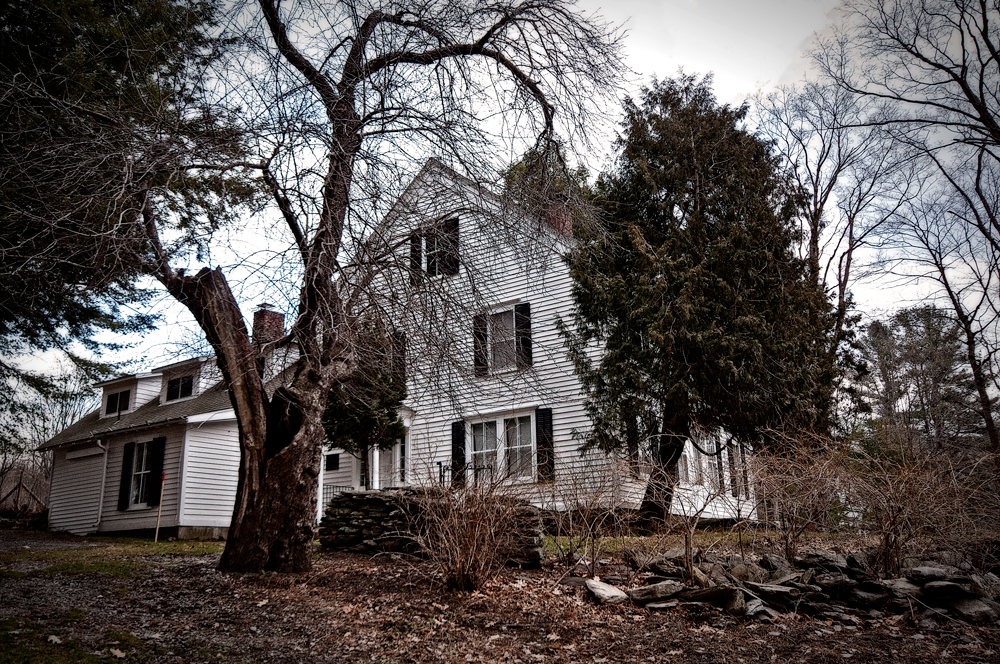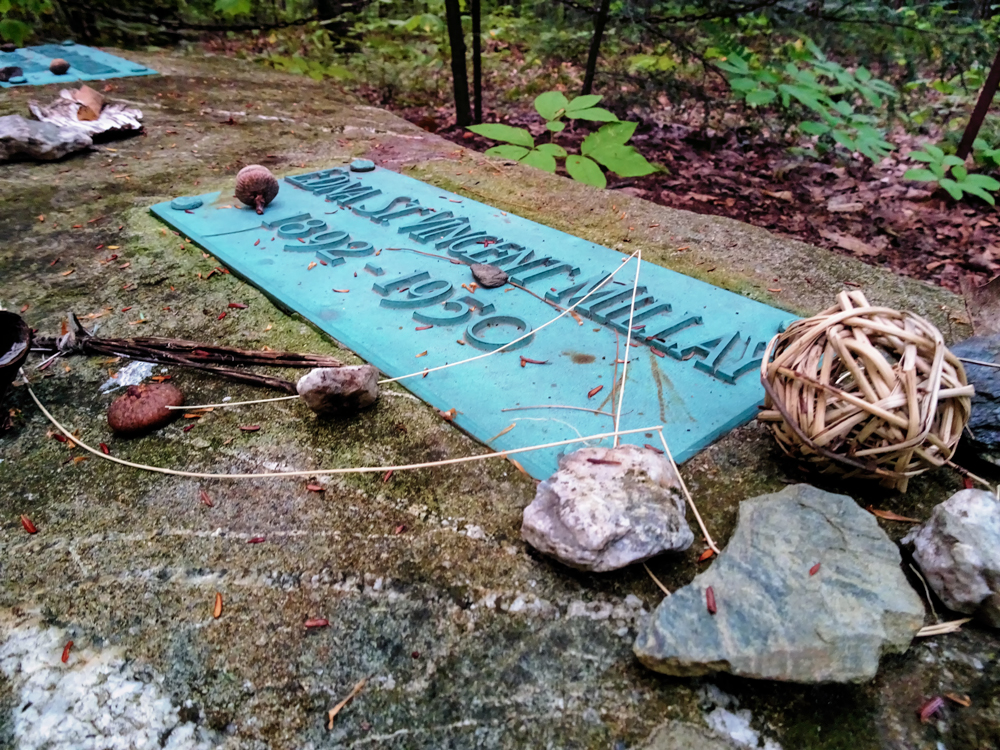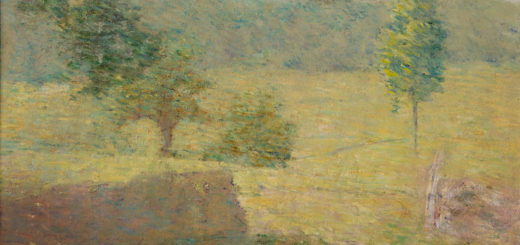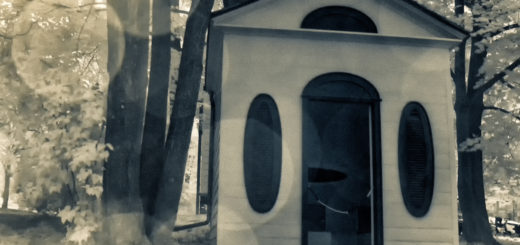Steepletop
Moldering books. The smell greets you as soon as you step into the house. Thousands of them are up there in the library, at the top of the stairs on the left side of the entry hallway. You won’t see them until near the end of the house tour, when the docent at last leads you into the “poetry room.” By that point, your lungs will be near-paralytic from the trenchant mustiness of the place. Perhaps it’s worth the discomfort. Very few historic houses have survived as this one has: “intact,” as conservators like to say, that is, with the distinctive materials, features, and spaces of the structure remaining as they originally were. In the case of this sprawling farmhouse, not only is the structure itself intact, but all of the stuff belonging to its famous owner is here too, pretty much as she left it when she died nearly seven decades ago. “We have everything,” said one curator, “her clothes, her shoes, her makeup. Everything!” They even have her seashell collection. It is on display in two built-in corner cabinets in the dining room. Each specimen is at rest—presumably untouched—exactly where she placed it all those years ago. “Museum” is not the right word to describe the feeling visitors encounter here. It’s more like prying open a somewhat neglected burial vault, then stepping in. The name of this place is “Steepletop.” It was the home of the poet Edna St. Vincent Millay.
Millay was born in Maine in 1892. She achieved fame by the time she was twenty years old, for having written a poem called “Renascence.” She attended Vassar College and upon graduation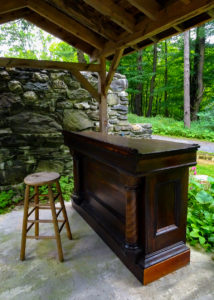 moved to Greenwich Village, where her renown only grew. She published many poems and became the “Lyric Voice of the Jazz Age.” She had many suitors, but in 1923 married Eugen Boissevain, a wealthy and affable Dutch businessman. By that point, urban living had begun taking its toll on Millay’s decidedly susceptive nerves. She wanted to move to the country. The couple learned of an abandoned blueberry farm for sale in the wooded hills above Austerlitz, New York. They visited the place and immediately bought it. Over the next months, they renovated the sixty-year-old farmhouse and in June of 1925 moved in. Millay called their new home “Steepletop,” after the woody-stemmed wildflower more commonly known as “hardhack.” It grew abundantly on their 700 acre property. Renovations continued. They knocked down a decrepit barn next to the house and fashioned amid the remaining foundation stones a garden, which included a reflecting pool and an outdoor bar. Nearby was Millay’s writing cabin. There she wrote many of her later poems as well as an acclaimed libretto. Atop a broad meadow behind the house, the Boissevains built a tennis court, where they played every day, weather permitting. With the help of a hired man, Eugen set himself up as a gentleman farmer. In some years, the farm actually turned a profit; in others, it served as a tax write-off. For the rest of their lives, the couple made their home at Steepletop
moved to Greenwich Village, where her renown only grew. She published many poems and became the “Lyric Voice of the Jazz Age.” She had many suitors, but in 1923 married Eugen Boissevain, a wealthy and affable Dutch businessman. By that point, urban living had begun taking its toll on Millay’s decidedly susceptive nerves. She wanted to move to the country. The couple learned of an abandoned blueberry farm for sale in the wooded hills above Austerlitz, New York. They visited the place and immediately bought it. Over the next months, they renovated the sixty-year-old farmhouse and in June of 1925 moved in. Millay called their new home “Steepletop,” after the woody-stemmed wildflower more commonly known as “hardhack.” It grew abundantly on their 700 acre property. Renovations continued. They knocked down a decrepit barn next to the house and fashioned amid the remaining foundation stones a garden, which included a reflecting pool and an outdoor bar. Nearby was Millay’s writing cabin. There she wrote many of her later poems as well as an acclaimed libretto. Atop a broad meadow behind the house, the Boissevains built a tennis court, where they played every day, weather permitting. With the help of a hired man, Eugen set himself up as a gentleman farmer. In some years, the farm actually turned a profit; in others, it served as a tax write-off. For the rest of their lives, the couple made their home at Steepletop
Eugen Boissevain died in 1949, Edna Millay a year later. She died after working all night on a set of proof sheets. The cause of death was coronary occlusion. It happened at the foot of the stairs leading up to the library. She was found the next afternoon by the hired man, whose name was John Pinnie. Her body was cremated and the ashes placed with those of her husband in a remote spot on the property, nearby the grave of Millay’s mother, who was buried there in 1931. After Edna’s death, sister Norma and her husband, Charles Ellis, moved into Steepletop. Norma altered things as little as possible around the house, going so far as to leave Edna’s clothes hanging where they were in the closets on the day she died. For the next thirty-six years Norma kept her own wardrobe in the bathroom. Thanks to her steadfast efforts, Steepletop—the house and its contents in toto—passed down through the long decades “intact.” The property was listed on the register of National Historic Places in 1971. Fifteen years later, Norma Millay died. Her remains were interred close to those of her sister and mother. After that, the Edna St. Vincent Millay Society took over preservation duties at Steepletop, continuing to this day.
Many have detected a curious, lingering presence at Steepletop. It’s most palpable inside the house, but it can be felt to varying degrees just about anywhere on the grounds. Perhaps it’s a ghost. More likely it’s the vestiges of what the writer Edmund Wilson called “Edna’s peculiar power.” By that he meant the keen interest she took in the world around her, the Poet’s ferocious attention that brands indelibly whatever it touches: the birds, and rocks, and stones, and trees. More than that, though, a conspicuous sense of grim isolation pervades the woods and meadows around Steepletop, even on the brightest of summer days.
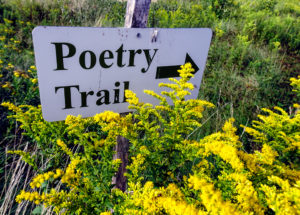 In Greenwich Village following the First World War, Millay and Wilson were close friends, and for a time lovers. Later he visited her and her husband at Steepletop. That was in 1929. Many years would pass before the next visit, in 1948. On the drive up “through the long tunnel of greenery that led to the Steepletop house,” Wilson recalls, “I felt, as I had not done before, that Edna had been buried out there.” The inside of the house had little changed in nineteen years. “I found in the living room most of the things that had been there in 1929 . . . the couches looked badly worn; the whole place seemed shabby and dim.” More dispiriting still: “I found them there, Edna and Eugen, just as I had left them in 1929,” as if they hadn’t moved, as if the silence of the grave had taken up residence with them in the house. “It disturbed me to find Edna and Eugen haunting like deteriorated ghosts their own comfortable old house in the country.” That was the last time Wilson saw either of them. These days, the parlor where this dreary scene took place is not part of the house tour. For reasons not immediately available, the windows are covered with thick drapery. Sunlight too, it would seem, is forbidden from entering this room. Maybe it’s for the best.
In Greenwich Village following the First World War, Millay and Wilson were close friends, and for a time lovers. Later he visited her and her husband at Steepletop. That was in 1929. Many years would pass before the next visit, in 1948. On the drive up “through the long tunnel of greenery that led to the Steepletop house,” Wilson recalls, “I felt, as I had not done before, that Edna had been buried out there.” The inside of the house had little changed in nineteen years. “I found in the living room most of the things that had been there in 1929 . . . the couches looked badly worn; the whole place seemed shabby and dim.” More dispiriting still: “I found them there, Edna and Eugen, just as I had left them in 1929,” as if they hadn’t moved, as if the silence of the grave had taken up residence with them in the house. “It disturbed me to find Edna and Eugen haunting like deteriorated ghosts their own comfortable old house in the country.” That was the last time Wilson saw either of them. These days, the parlor where this dreary scene took place is not part of the house tour. For reasons not immediately available, the windows are covered with thick drapery. Sunlight too, it would seem, is forbidden from entering this room. Maybe it’s for the best.
Visitors instead are encouraged to explore the land surrounding the Steepletop house. About two hundred acres of the original property remain under the management of the Millay Society. Most of the rest has been incorporated into the surrounding Harvey Mountain State Forest. You can sit at the outdoor bar near the old reflecting pool, but the only things served anymore are memories and imaginings. The outline of the Boissevain’s tennis court is clearly discernible atop the high meadow behind the house. A pair of rusting net posts serve as markers. Come here around Labor Day and you’ll see long swaths of un-mowed meadow, dense with late-summer wildflowers—goldenrod, aster, and hardhack—along with their faithful pollinators, the bees and the butterflies. From the tennis court it’s not far to the Poetry Trail blazed with signs bearing poems written by the poet who once lived here. Walk down the trail and before long you arrive at a small graveyard slowly being reclaimed by forest. Here lie the remains of Edna St. Vincent Millay and her family. Here the Poetry Trail comes to an end.
©John P. O’Grady
Originally appeared in The Mountain Eagle on September 7, 2018
